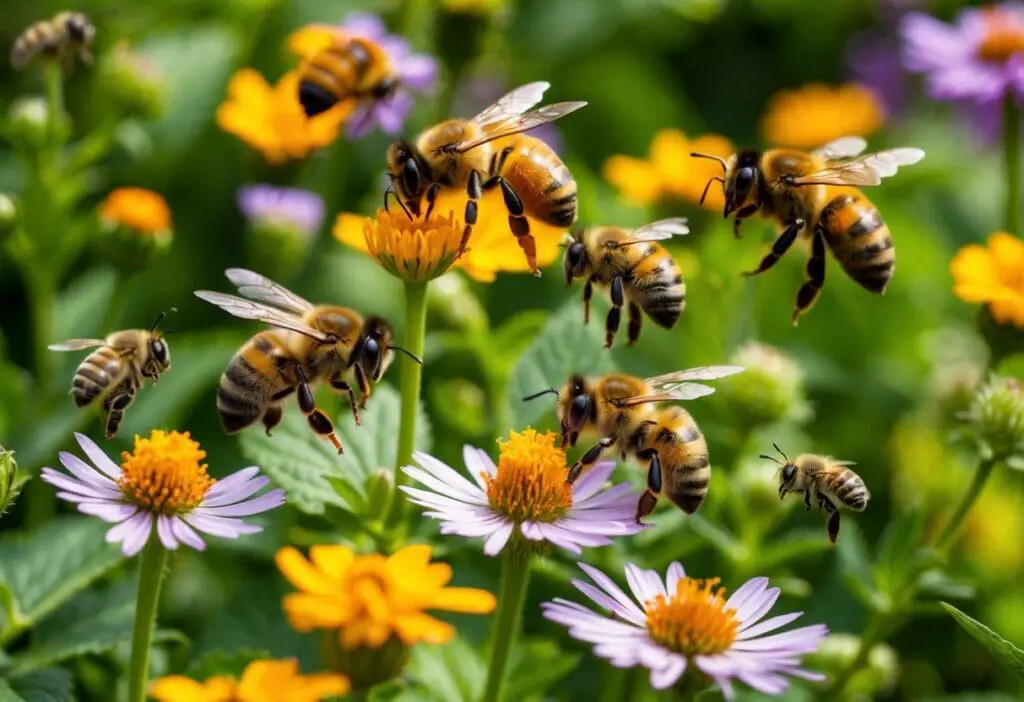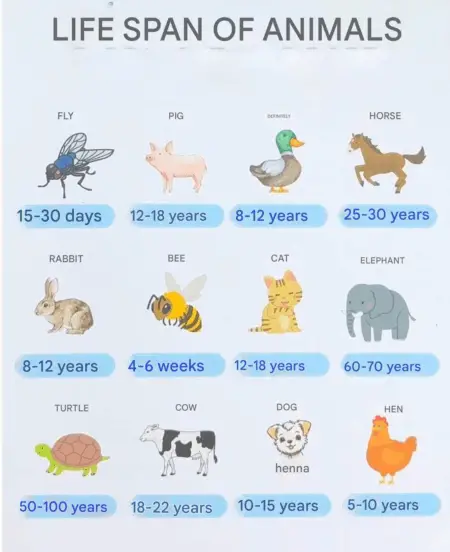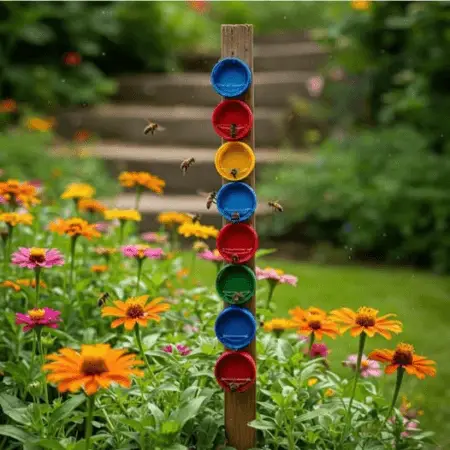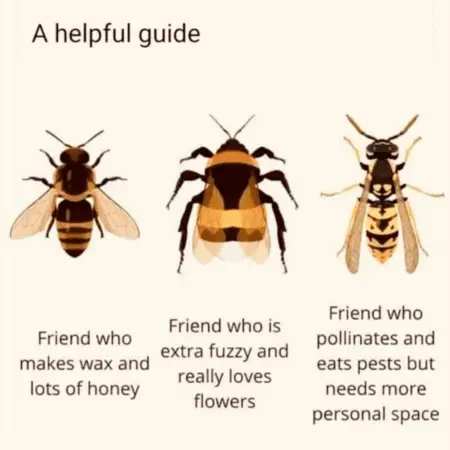Bees play a crucial role in the health of gardens and the production of many crops. They are key pollinators, helping to grow vegetables, flowers, and other plants. Without these creatures, a significant percentage of food crops around the world would suffer, impacting both human diets and livestock feed.
While honeybees and bumblebees are well-known favorites among gardeners, many other bee species also contribute to effective pollination.
To create a welcoming environment for bees, gardeners should focus on planting attractive flowers. Native plants and wildflowers are excellent options to consider.
Additionally, minimizing pesticide use is essential to protect these beneficial insects, as many chemicals can harm bees and other pollinators.
By understanding the types of bees that benefit gardens and how to attract them, gardeners can enhance their gardening experience and promote biodiversity.
Table of Contents
Key Takeaways
- Bees are vital for pollinating many crops and plants.
- Planting native and wildflowers can attract various bee species.
- Reducing pesticide use helps protect beneficial pollinators.
1. Bumblebees
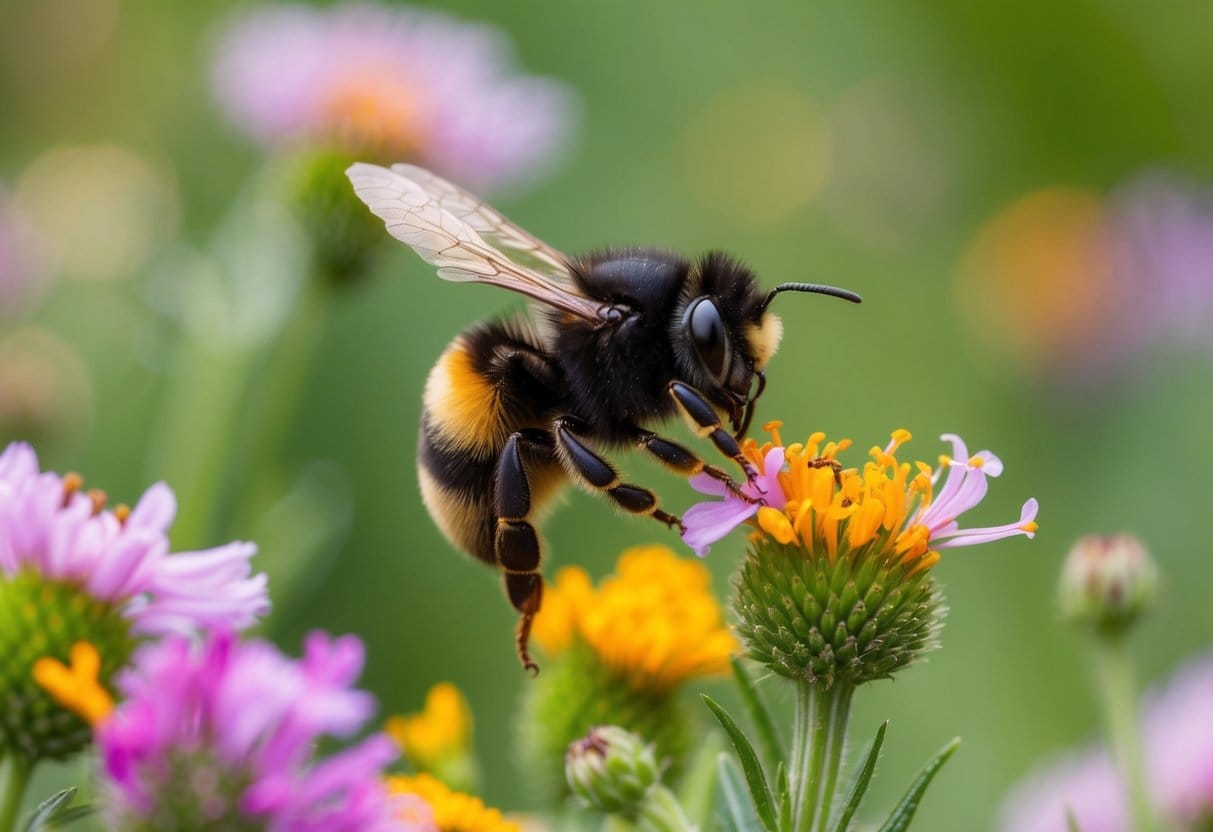
Bumblebees are vital pollinators, with over 250 different species. They are typically non-aggressive, making them friendly visitors in gardens.
To attract more bumblebees, it is beneficial to plant flowers that bloom at various times throughout the year.
Spring: Primrose, sweet rocket\
Summer: Lavender, honeysuckle\
Fall: Sweet scabious, aster
In addition, choosing flowers in shades of blue, purple, pink, or yellow can increase bumblebee visits.
For instance, yellow yarrow and either pink or purple lupine are excellent choices to support bee populations and enhance garden beauty.
2. Squash Bees
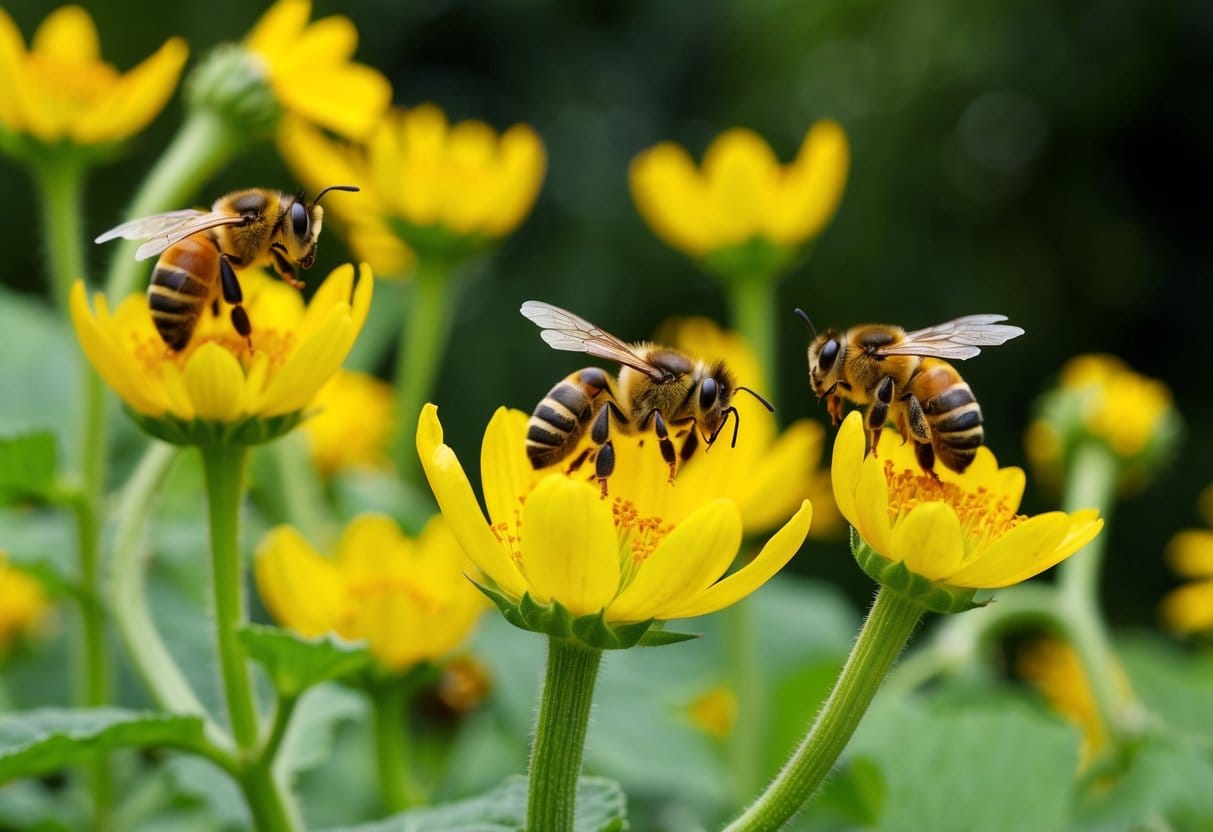
To cultivate a successful gourd garden, it is essential to encourage squash bees.
Many gardeners mistakenly try to eliminate these beneficial insects, thinking that all bugs are harmful.
Squash bees belong to two main genera: Peponapis and Xenoglossa, which are vital for pollinating crops such as zucchini, butternut squash, cucumbers, and pumpkins.
To attract these bees, planting a variety of gourds is beneficial.
Additionally, avoiding deep tilling of the soil is important, as squash bees create their nests underground, similar to some bumblebees. By fostering the right environment, they will thrive and enhance crop production.
3. Alkali Bees
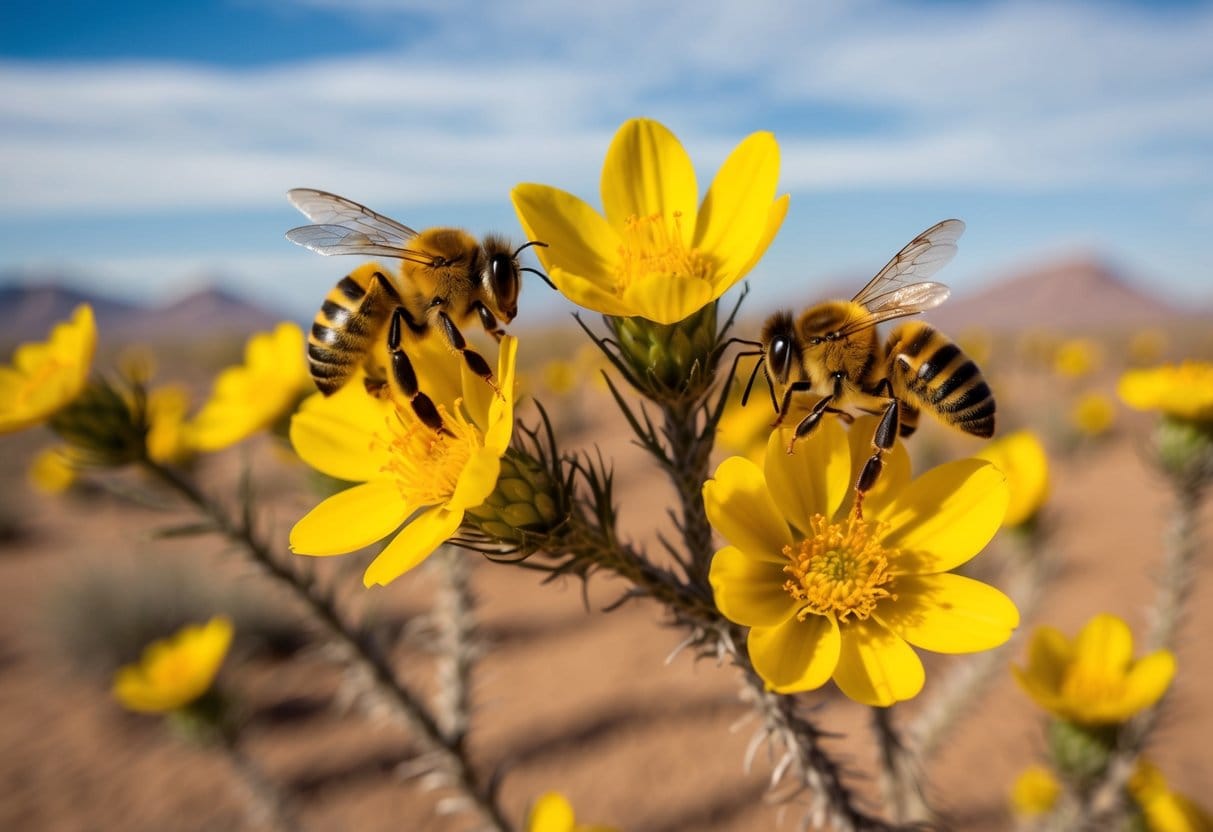
Alkali bees are found in the deserts of the Western and Southwestern United States. They thrive in environments that are challenging for many other bee species.
These bees play a key role in pollinating a variety of vegetables from the pea family, including lentils, beans, peanuts, and other legumes.
Notably, alkali bees excel at pollinating alfalfa. The flowers in this family have a unique trigger mechanism that must be activated to access pollen, and alkali bees have mastered this technique effectively.
They create nests in the ground, so maintaining areas of untouched, salty soil in gardens can encourage their presence.
4. Mason Bees
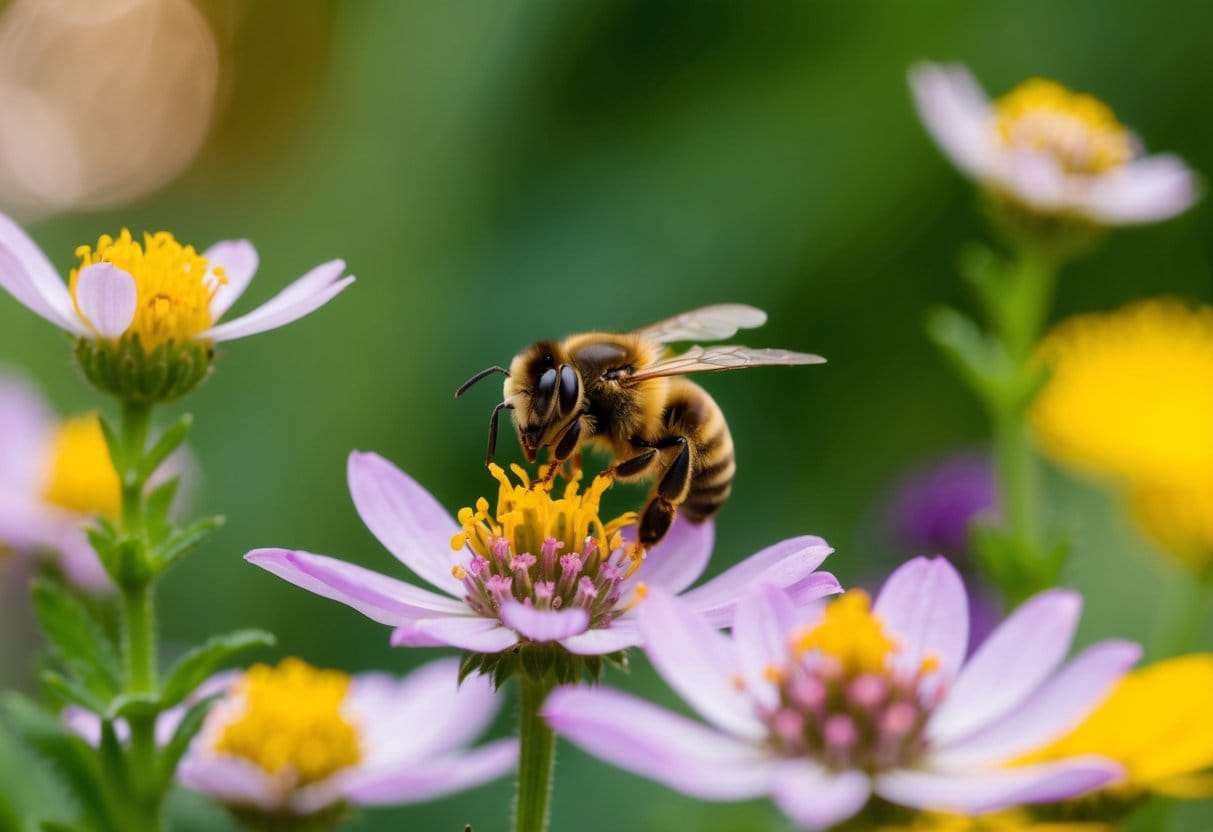
Mason bees are highly effective pollinators, known for their hairy bodies that pick up and transfer large amounts of pollen.
They start their pollination activities early in the spring, which gives them an advantage over honeybees.
These bees thrive on a variety of fruits, including apricots, blueberries, cherries, and peaches, as well as flowers from the rose family.
To attract mason bees, consider installing a mason bee house or creating nesting tunnels by drilling 5/16-inch wide, 6-inch deep holes in wood.
Additionally, providing a mud source is essential, as they use it to construct barriers around their eggs.
5. Leafcutter Bees
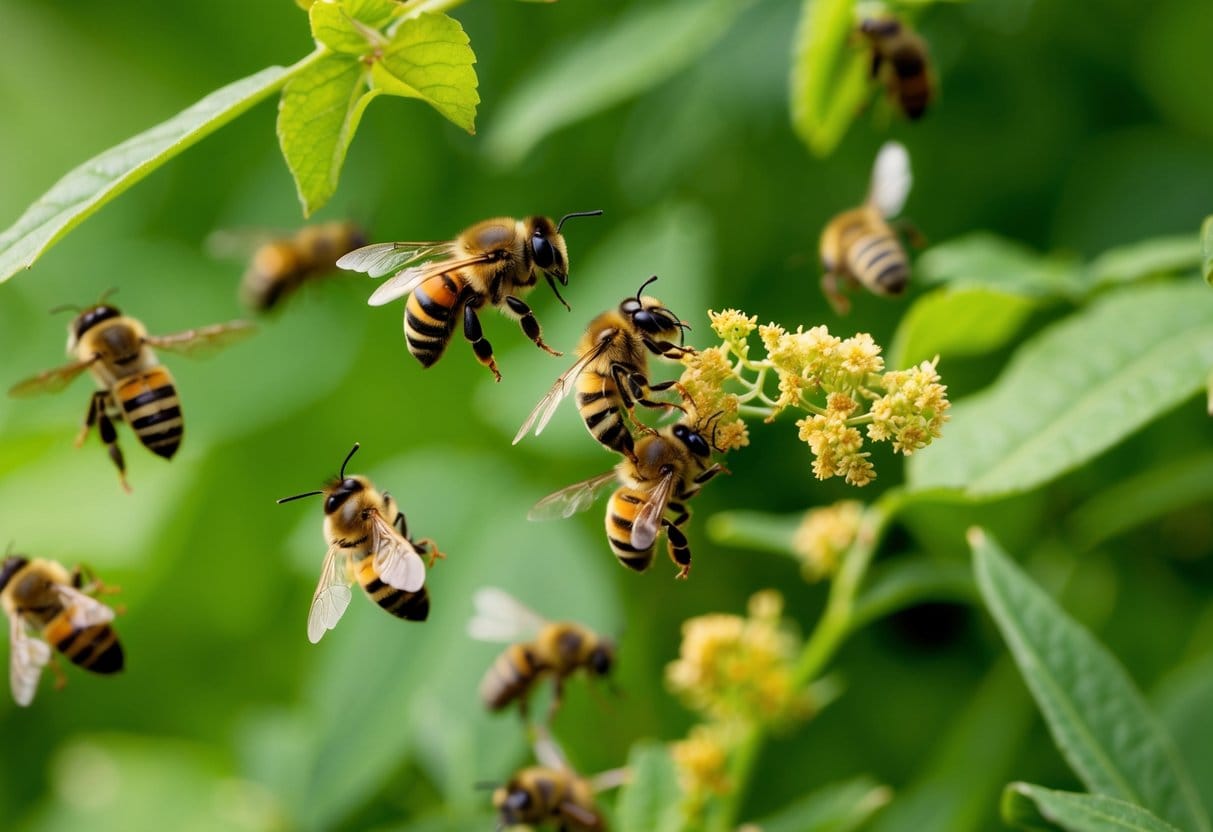
Leafcutter bees are known for creating distinct circular cuts in leaves to gather material for their nests.
These bees play a vital role in pollinating various wildflowers and crops across North America.
To attract them, gardeners can plant crops like blueberries, carrots, and onions.
Ornamental plants, such as azaleas, roses, and bougainvillea, provide the leafy materials these bees need.
Similar to mason bees, leafcutter bees benefit from specialized nesting sites. Creating or purchasing a bee house with small tunnels can encourage them to build nests, enhancing both pollination and garden health.
6. Carpenter Bees
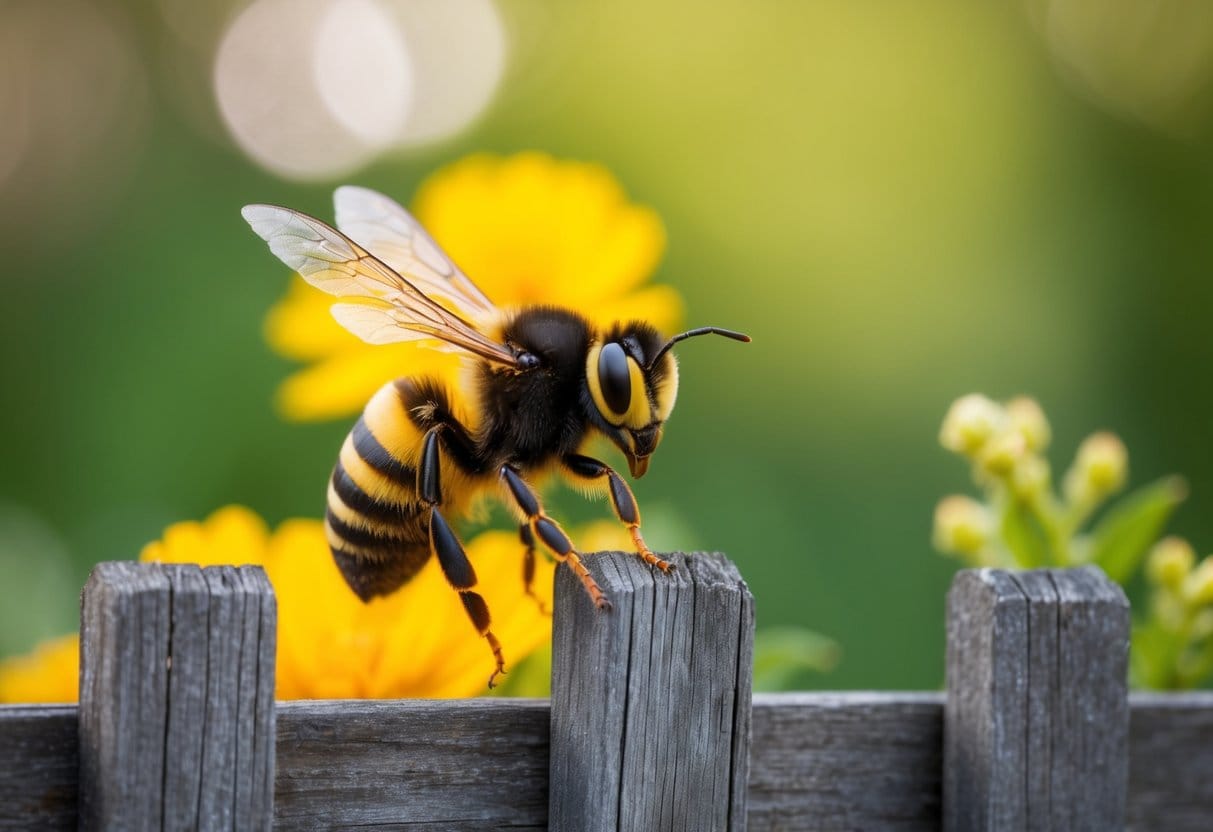
Carpenter bees are often viewed as nuisances due to their ability to create holes in wood. Despite this, they play a vital role in pollination.
This native bee species is found across much of the United States and is particularly effective in pollinating vegetables like eggplants and tomatoes.
They utilize a technique known as buzz pollination, which involves shaking pollen loose from flowers.
To attract these bees, using weathered softwoods such as cedar and pine is recommended.
However, to protect wooden structures from damage, it is wise to pressure-treat, paint, or stain patios, furniture, and siding.
7. Blueberry Bees
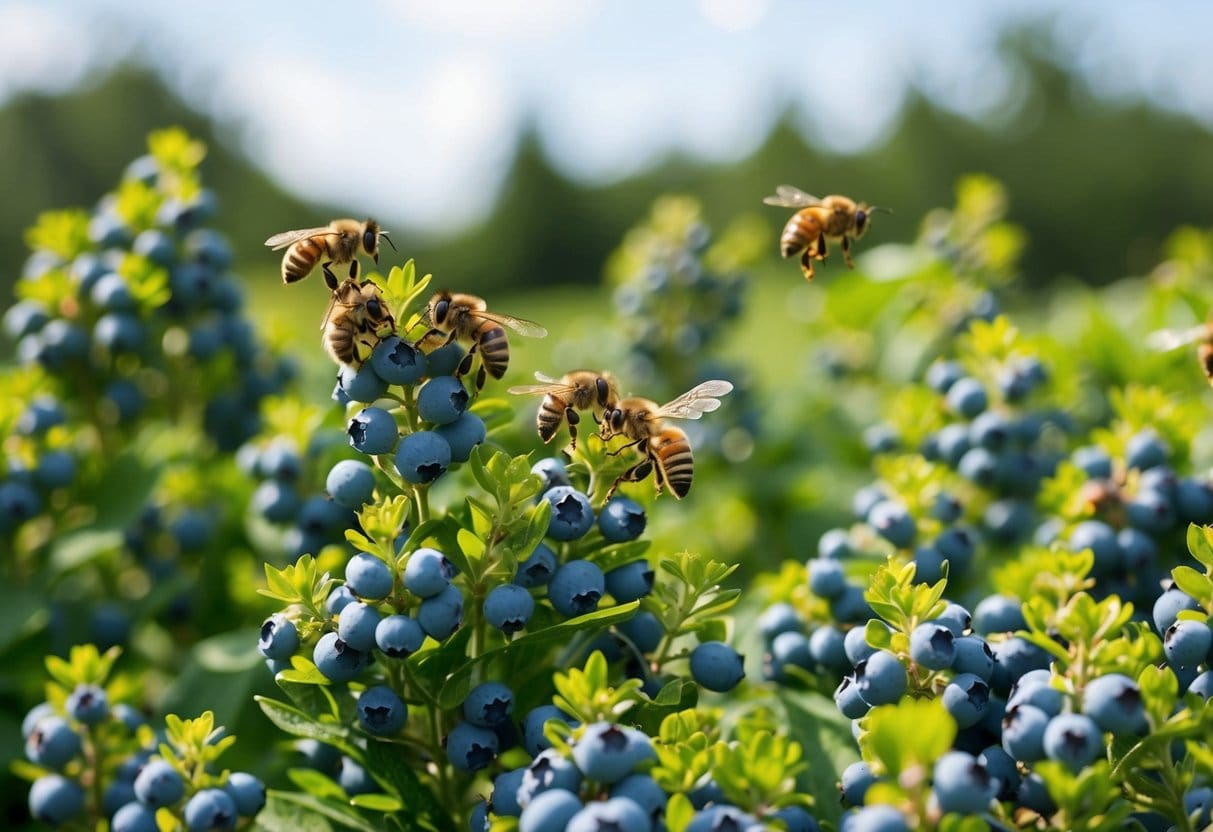
Blueberry bees play a crucial role in bringing fresh blueberries to tables everywhere. These bees excel at pollinating both wild and cultivated blueberries, utilizing a technique called buzz pollination.
Active in early spring, they ensure the successful development of the fruit.
To encourage these helpful pollinators, homeowners can plant blueberry bushes in their gardens.
It is essential to avoid using pesticides around these plants. Additionally, providing loose, bare soil allows blueberry bees to nest underground, further supporting their population and enhancing garden productivity.
8. Virescent Green Metallic Bees
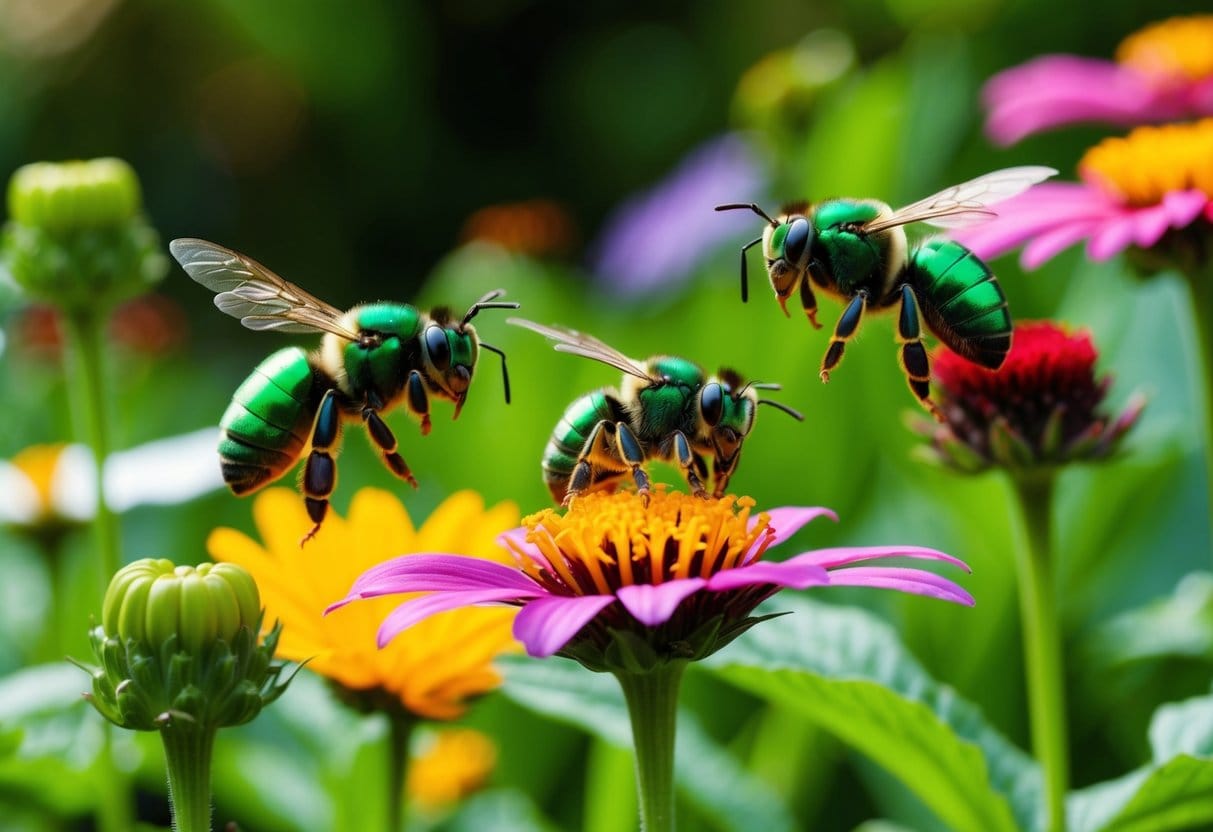
The virescent green metallic bee showcases a striking green or bluish hue on its body. This species is found primarily in the United States and southern Canada.
They have a preference for the Asteraceae family, enjoying flowers such as coneflowers, sunflowers, asters, and daisies. However, these bees also contribute to the pollination of a variety of other plants.
Commonly seen in urban environments, they are beneficial for attracting to gardens in cities and busy neighborhoods.
To encourage their presence, it is helpful to leave some bare soil for their nesting, as they prefer to burrow underground.
9. Ground-Nesting Bees
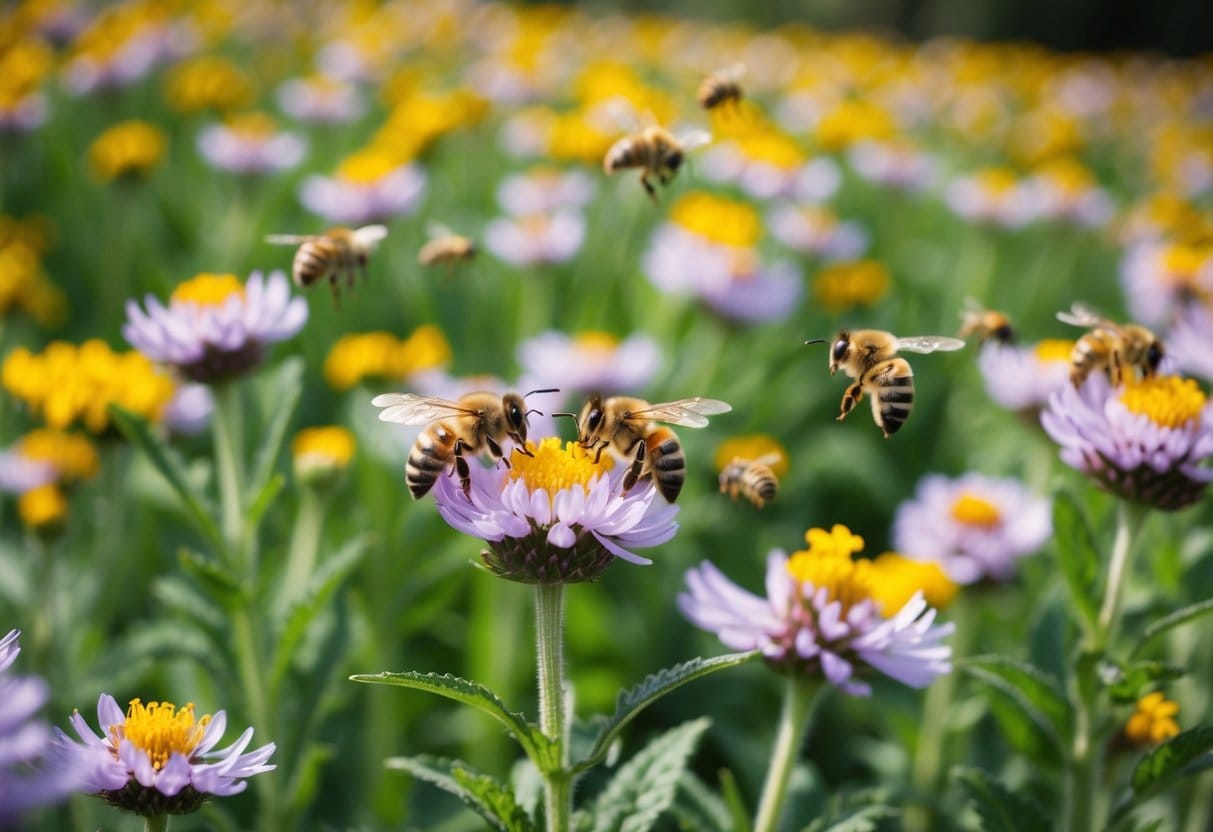
Furrow bees reside widely across the Northern Hemisphere, especially thriving in the northern and western regions of North America.
These bees are not selective pollinators and can be found on a variety of plants, including wildflowers, fruits, and vegetables.
To attract them, gardeners should cultivate a diverse range of these plants.
Furrow bees often build their nests underground or in decaying wood, so maintaining an open area in the yard increases the chances of them settling nearby.
10. Honeybees
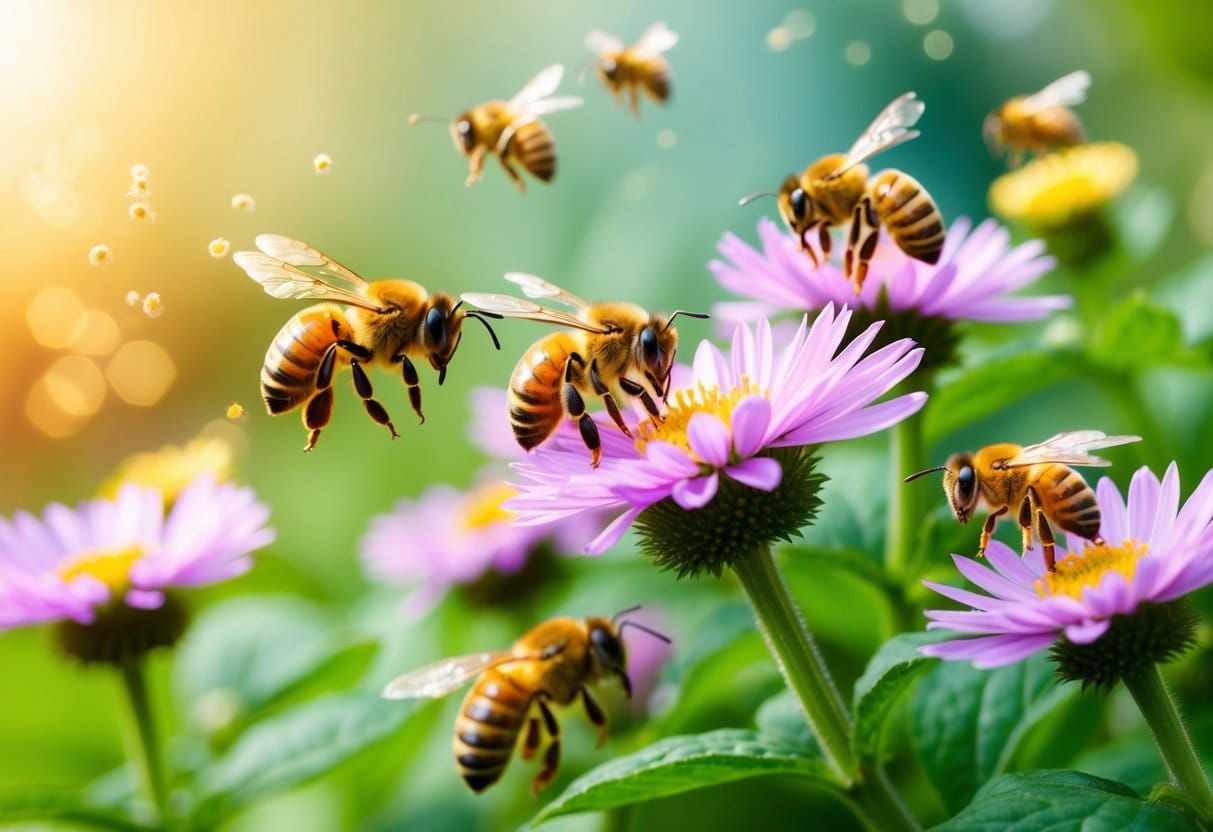
Honeybees play a vital role as pollinators, despite not being originally from the United States. They search for flowers rich in pollen and nectar, which are essential for their diet and for producing honey.
Some excellent flowers to attract honeybees include sunflowers, asters, and wallflowers.
Beekeeping has gained popularity, as it allows individuals to maintain colonies in their backyards.
By keeping honeybees, one can support local ecosystems and enjoy the benefits of home honey production.
With the right care and management, a beekeeper can cultivate a thriving hive filled with these industrious insects.
Frequently Asked Questions
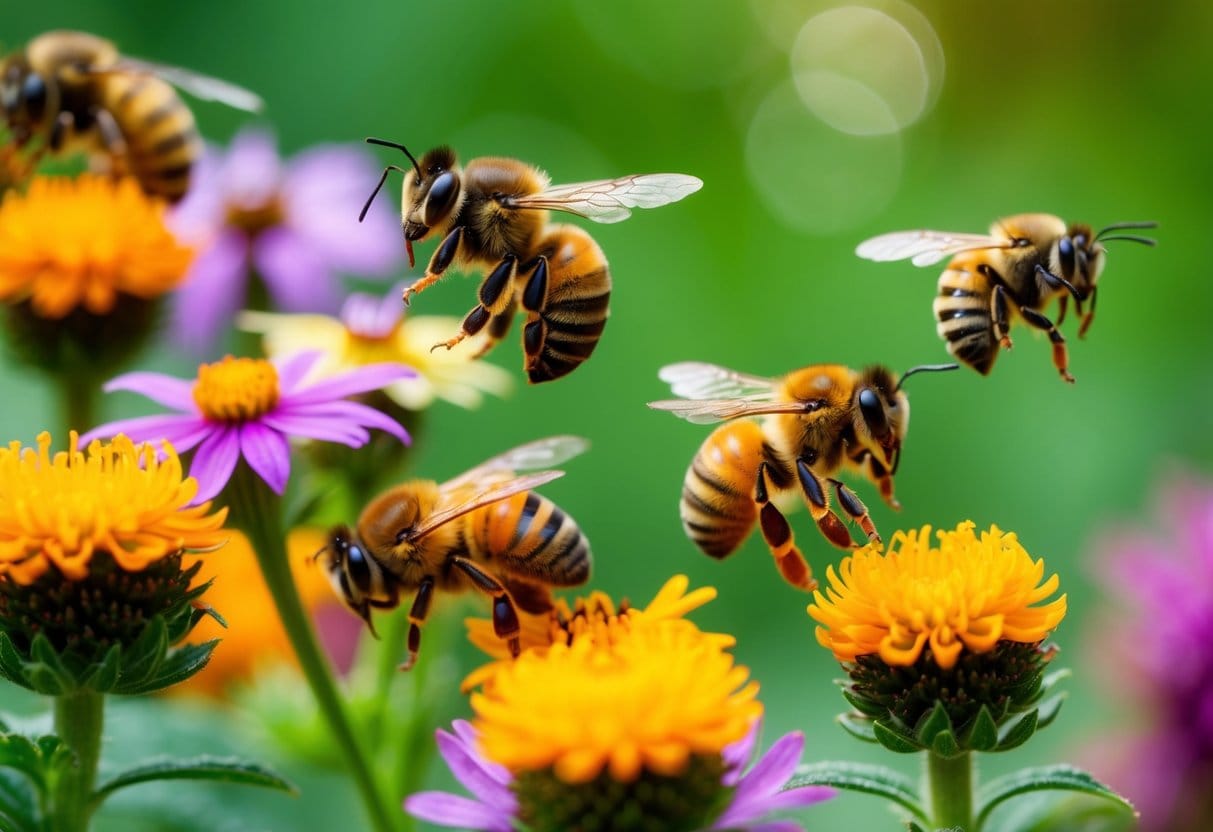
What are the top bee species that effectively pollinate gardens?
Several bee species are recognized for their great ability to pollinate in garden settings. Notably:
- Honeybees are excellent generalists and can pollinate a diverse range of plants.
- Bumblebees are strong and can work in cooler temperatures, making them useful in various conditions.
- Mason bees are efficient pollinators for early spring flowers due to their early emergence.
Which bee types are the least aggressive?
Most bees are not aggressive and will only sting when threatened. The following species are known for their gentle nature:
- Mason bees do not defend their nests aggressively and rarely sting.
- Leafcutter bees are also known to be calm and avoid confrontation.
What environmental advantages do mason bees offer?
Mason bees provide several important ecological benefits:
- They are exceptional pollinators, significantly enhancing fruit and flower production.
- Their activity supports biodiversity, which can lead to healthier ecosystems.
- They contribute to soil health by promoting plant diversity.
Which bee types should be introduced to enhance plant pollination?
For improving pollination in gardens, these bee species are highly beneficial:
- Honeybees are widely used and versatile.
- Bumblebees excel in their ability to pollinate large flowers.
- Mason bees specialize in solitary nesting and are great for early blooms.
Can you name some plants that attract bees and aid in pollination?
The following plants are known to be bee-friendly and support effective pollination:
- Lavender
- Sunflowers
- Coneflowers
- Blueberry bushes
- Clover
How does using bee-safe pest control benefit bee populations?
Employing bee-safe methods for pest control can greatly support bee health.
These strategies include:
- Using organic pesticides that do not harm bees.
- Applying pest controls at night, when bees are less active.
- Encouraging beneficial insects to manage pests naturally.
These practices help maintain and boost beneficial bee populations in gardens and ecosystems.


